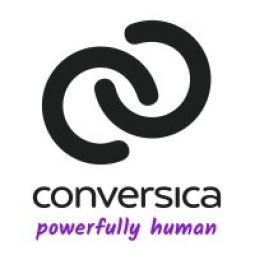Technology Category
- Infrastructure as a Service (IaaS) - Virtual Private Cloud
- Wearables - Virtual Reality Glasses, Headsets & Controllers
Applicable Industries
- Cities & Municipalities
- Finance & Insurance
Applicable Functions
- Procurement
- Sales & Marketing
Use Cases
- Inventory Management
- Usage-Based Insurance
Services
- System Integration
About The Customer
Spring Venture Group is an innovative insurance brokerage located in Kansas City, MO. The company specializes in the sale of health and life insurance, including supplemental Medicare insurance plans. By comparison shopping plans across 25 different carriers, Spring Venture Group is able to find its customers the best policy rates. The company is always looking for ways to increase the efficiency of its sales teams, especially through the use of sales automation solutions. It generates leads from multiple sources, including direct mail, demand generation campaigns, its websites, and by bidding on leads for purchase from third-party vendors.
The Challenge
Spring Venture Group, a leading independent insurance brokerage based in Kansas City, MO, was seeking ways to enhance the efficiency of its sales teams and reduce the cost per lead acquisition. The company generates leads from various sources such as direct mail, demand generation campaigns, its websites, and by bidding on leads for purchase from third-party vendors. The vice president of marketing’s primary challenge was to determine the number of leads marketing needed to drive to sales to meet their goals without increasing the cost per acquisition (CPA). The company was already using sales automation solutions like Salesforce, but there was a need for a more efficient solution to manage the sales conversion process.
The Solution
Spring Venture Group implemented Conversica, an automated sales conversion management software, in early 2014. The software was integrated with Salesforce and used a virtual persona named Mary to contact, engage, and qualify leads that the sales teams were unable to reach after three days or five to seven dials. Once Mary received confirmation of intent from a lead, the Conversica application sent an alert email to a sales agent who would then follow up on the hot lead. The Agent Scorecard, a part of Conversica’s integration with Salesforce, helped manage the sales teams and make informed decisions on which agents should work on specific campaigns. The company also used metrics from Conversica to evaluate lead sources and identify the best and worst performers.
Operational Impact
Quantitative Benefit

Case Study missing?
Start adding your own!
Register with your work email and create a new case study profile for your business.
Related Case Studies.

Case Study
Turning A Stadium Into A Smart Building
Honeywell created what it called the “intelligent system” for the National Stadium in Beijing, China, turning the venue for the opening and closing events at the 2008 Summer Olympics into a “smart building.” Designed by highly controversial artist Ai Weiwei, the “Bird’s Nest” remains one of the most impressive feats of stadium architecture in the world. The 250,000 square meter structure housed more than 100,000 athletes and spectators at a time. To accommodate such capacity, China turned to Honeywell’s EBI Integrated Building Management System to create an integrated “intelligent system” for improved building security, safety and energy efficiency.
.png)
Case Study
Smart Street Light Network (Copenhagen)
Key stakeholders are taking a comprehensive approach to rethinking smart city innovation. City leaders have collaborated through partnerships involving government, research institutions and solution providers. The Copenhagen Solutions Lab is one of the leading organizations at the forefront of this movement. By bringing together manufacturers with municipal buyers, the Copenhagen Solutions Lab has catalyzed the development and deployment of next-generation smart city innovations. Copenhagen is leveraging this unique approach to accelerate the implementation of smart city solutions. One of the primary focus areas is LED street lighting.

Case Study
Buoy Status Monitoring with LoRa
The Netherlands are well-known for their inland waterways, canals, sluices and of course port activities. The Dutch Ministry of Infrastructure indicates that there are thousands of buoys and fixed items in and near water environments that would profit from IoT monitoring. One of the problems with buoys for example, is that they get hit by ships and the anchor cable breaks. Without connectivity, it takes quite some time to find out that something has happened with that buoy. Not to mention the costs of renting a boat to go to the buoy to fix it. Another important issue, is that there is no real-time monitoring of the buoys at this moment. Only by physically visiting the object on the water, one gains insight in its status.

Case Study
Barcelona Case Study
Barcelona’s heavy traffic and its associated high levels of pollution were the primary factors that motivated some companies and universities to work on strategies for improving traffic in the city centre. Bitcarrier is one of the technologies involved in the In4Mo Project, whose main objective is to develop the applications that form the core of smart mobility, one of the fundamental pillars of the smart city concept.

Case Study
China Mobile Smart Parking
Smart Parking, powered by NB-IoT technology, is making it easier for drivers to find free parking spots. Cities can better manage their parking assets and maximize the revenue available to them as a result. Drivers searching for parking create congestion and pollution by circling and hunting for available parking. Smart Parking services are able to significantly ease these problems by guiding a driver directly to a parking space.








